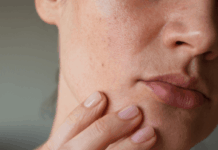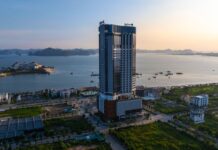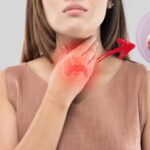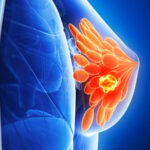Breast cancer is a leading health concern for women, and according to the American Cancer Society, there are several risk factors that can increase the likelihood of developing this disease. While some of these factors are controllable, such as lifestyle, nutrition, and hormone therapy, others are uncontrollable, including age and genetics.
**1. Age Over 55:**
The risk of breast cancer tends to increase with age. Statistics show that most cases are diagnosed in women aged 55 and older due to hormonal changes and alterations in breast tissue structure over time.

**2. Genetics and Gene Mutations:**
Between 5% and 10% of breast cancer cases are caused by genetic factors, particularly mutations in the BRCA1 or BRCA2 genes. These genes are responsible for DNA repair, but when mutated, they can lead to abnormal cell growth and cancer.
**3. Family History of Breast Cancer:**
Your risk increases if you have a direct family member, such as a mother, sister, or daughter, who has had breast cancer. Having two affected family members can triple the risk. Additionally, male relatives with breast cancer are also a concern.
**4. Previous Breast Cancer Diagnosis:**
Women who have been treated for breast cancer in one breast have a higher chance of developing a new cancer in the other breast or a different part of the same breast. Although less common, this risk is higher for women diagnosed at a younger age.
**5. Racial Differences:**
The incidence of breast cancer varies among racial groups. White women have a higher risk of developing the disease compared to African-American women, but they have a lower mortality rate. Asian, Hispanic, and Native American women have lower rates of both incidence and mortality.
**6. Height:**
Studies indicate that taller women are at an increased risk of breast cancer. The reason is unclear but may be related to genetic factors, nutrition, or hormones during development.
**7. Dense Breast Tissue:**
Breasts with a higher proportion of glandular and fibrous tissue compared to fatty tissue are considered dense. High breast density can make cancer detection through mammography more challenging and also increases the risk of cancer. This may be due to hormonal, genetic, or age-related factors, as well as reproductive history.
**8. Benign Breast Conditions:**
Certain benign breast conditions, especially those with atypical hyperplasia (abnormal cell growth), can increase the risk of cancer. Women with these conditions should undergo regular, careful monitoring.
**9. Early Menstruation:**
Starting your period early, especially before the age of 12, means longer exposure to estrogen and progesterone, increasing the risk of breast cancer later in life.
**10. Late Menopause:**
Similarly, women who experience menopause after the age of 55 have prolonged exposure to hormones, elevating their risk. The more menstrual cycles a woman has during her lifetime, the higher the risk of breast cancer.
**11. Exposure to Diethylstilbestrol (DES):**
DES is a hormone medication used during pregnancy from the 1940s to 1970s to prevent miscarriage. Women who took DES or whose mothers took this drug have a slightly higher risk of breast cancer.
**12. Chest Radiation Therapy at a Young Age:**
Women who underwent radiation therapy to the chest to treat diseases like Hodgkin lymphoma when they were young are at an increased risk of breast cancer later in life. This risk is particularly elevated if the radiation therapy was administered during adolescence when the breasts were still developing.
**What to Do If You’re at High Risk:**
Understanding these risk factors empowers women to take a proactive approach to breast cancer screening and prevention. If you fall into a high-risk category, it’s important to undergo regular health check-ups, including mammography and ultrasound screening, and maintain a healthy lifestyle to reduce your risk.



































